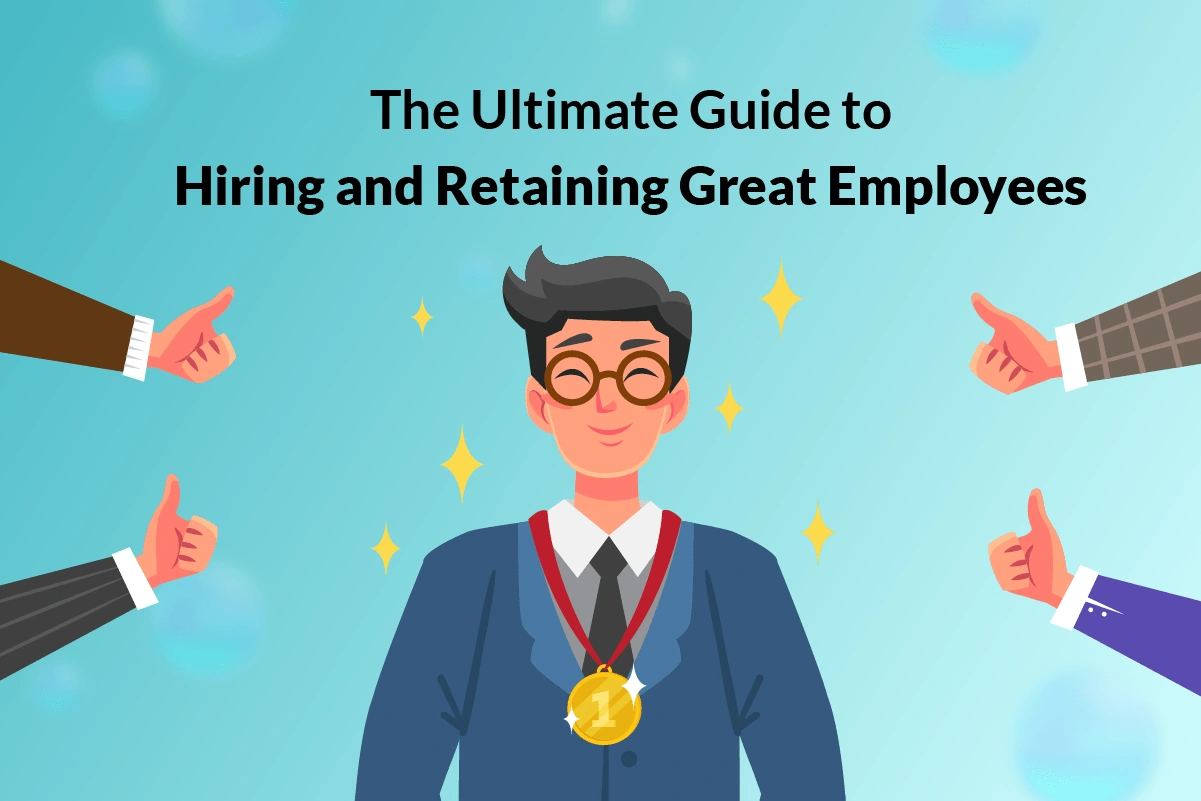What are the best steps to hiring and retaining an employee? The hiring and retaining process can vary from company to company. It may depend on your company’s existing open position or the industry in which it operates.
However, there are still necessary steps that any organization and company can take to get the right talent and retain them. So what are they? Let’s get into the details!
Step 1: Define Hiring Requirements
Define the Time Required
Start by defining the employment and weekly time required to succeed in this role. It might include the following options:
- Seasonal
- Temporary
- Part-Time
- Full-Time
- Independent contractor
=> You should read: Hiring Independent contractors or employees?
Define Candidate Requirements
Consider what qualifications you need from an ideal candidate for education, experience, and training. Remember to prioritize your requirements and be clear about nice-to-haves and must-haves. For example, a marketing degree could be a nice-to-have if they have 12+ years of experience in a marketing role.
Define Job Responsibilities
Before writing a job description, it is essential to identify the vital responsibilities, functions, and physical demands for the open position.
Make a Job Description
Your job description should be a concise, clear list of the essential responsibilities and functions necessary to succeed in this role.
Step 2: Pay Attention to the Basic Federal Labor Laws
Paying Attention to the Basic Federal Labor Laws is one of the first steps for employers to become an EEO:
FLSA (Fair Labor Standards Act)
The FLSA includes standards all employers must obey regarding overtime pay, recordkeeping, minimum wage, and employees under 18.
Federal discrimination laws
These laws prohibit discrimination in all employment steps, including job advertisements, interviewing, hiring, and compensation.
- The Americans with Disabilities Act (ADA).
- ADEA (The Age Discrimination in Employment Act).
- The Equal Pay Act.
- Title VII of the Civil Rights Act of 1964.
- The PDA (Pregnancy Discrimination Act) of 1978.
OSHA (Occupational Safety and Health Administration) Safety Regulations
OSHA Regulations aim to protect employees from injury related to their jobs.
Specific regulations might vary by industry. For example, if your company requires employees to use power tools and climb ladders, you must obey more stringent regulations than a tutoring service.
Outside of FLSA and OSHA, you need to consider the state requirements for employers, including:
- State employment discrimination laws
- Unemployment taxes
- Workers’ compensation insurance
- Disability insurance
- Local regulations
Step 3: Promote Your Job Posting
You won’t be able to attract potential candidates if they can’t find you, right? That’s why you need to post your job in places that will attract the best candidates for your specific role.
Although you can use local resources, you will gain more applicants using broader tools to post your open positions on Google. Additionally, here are a few options worth trying:
- Online job sites
- Alumni chat rooms/sites
- eNewspapers
- Email blasts to your network
- Internal employee notifications
- Social media channels.
- Your company’s website
Step 4: Pre-Screening Candidates
Now that you have hundreds of applications coming your way, you have to narrow down the candidate pool by pre-screening. Pre-screening refers to evaluating the quality of your candidates before interviewing them. This process can save you money, time, and many headaches.
This process might start by evaluating the candidate’s application, then go to their cover letter and resume. You may consider exploring their online presence by finding them on LinkedIn or Facebook. If a candidate passes your pre-screening tests, they will participate in your phone calls, video interviews, and any in-person interviews.
Evaluating candidates by the scoring tool, hiring rubric.
Depending on how many job seekers you get, you may need to further narrow the pool. This process typically involves the following steps:
- Check your Applicant Tracking System (ATS) to see if they have applied before and for other pre-screening notes.
- Request cover letters and review.
- Check your network for someone who can vouch for the candidate.
Step 5: Conduct an Interview
You can choose an interview style or a combination of styles.
Phone Interview
You can set up a phone interview before holding an in-person meeting to gain preliminary information about your potential candidates.
Video Interview
If organizing an in-person interview is impossible because of geographical reasons or time, setting up a video interview is a great option.
In-Person Interviews
An in-person interview is great because the candidate will gain a better understanding of the environment and culture they would be working in. Meeting face to face should be done especially if they will be required to work in the office.
Step 6: Make an Offer
Once you’ve found the right candidate, you can make a job offer via a phone call and following up with an offer letter afterward. This letter should include the following information:
- Job title.
- Job description
- Anticipated start date.
- Pay.
- Supervisor.
- A summary of benefits.
- Employment at-will relationship.
- The contingent nature of the offer (reference or background check and or/and drug test).
We recommend sending an email or letter thanking candidates you don’t choose and wishing them luck in their future job search. You should also let promising candidates know that you may consider them for future open positions.
Step 7: Onboarding New Employees
There are many studies that show an intentional and welcoming onboarding process, results in higher employee retention rates. Here are some ways to improve your onboarding process for employee success.
Prepare Colleagues for Your New Employee
You should welcome the new employee via email, make a company-wide announcement, and have someone greet them in-person. In the company-wide announcement you should explain their experience and their role. Moreover, remind current employees to welcome them and help them get used to the new place.
Ensure the New Employee’s Workstation Is Ready
This factor will significantly affect a new employee’s first impression of your company. Nothing is worse than they don’t have the tools to work on their first days, right?
So you should prepare an email, phone number, computer, and any necessary office supplies ahead of time for the new employee. Also, ensure your new employee can access any necessary software, programs, or electronic files before their first day.
While it’s not their direct space, be sure to show the employee the break room, restrooms, printer area and any commonly used meeting rooms.
Make Introductions
On a new employee’s first day, schedule them to meet important people and departments. It will give them an overview of the people in your company and how it is running.
Make a Team Lunch
A lunch meeting can break the ice and allow the new employee to get to know their new colleagues in a relaxed environment.
Spend Time on Training
Even if your new employee has performed the same position at the previous company, they should also focus on training during the first week as there are differences between companies. The training should include company rules, procedures, processes, and expectations.
Follow-Up
Following up on regular intervals is one of the essential parts of the onboarding process. Ensure you have a system in place to evaluate how things are going at the 30, 60, 90-day mark. You should ask your new employee what they don’t like and like about the on boarding process and adjust accordingly.
You can find out more about how long the hiring process take or ways to speed up it through this article:
How Long Is The Hiring Process? Why Does It Take So Long Sometimes?
Wrapping It Up
You now have our recommended steps to hire and onboard an employee. Boulo Solutions will hope they’ll be a key player in your success with these steps and hiring tips for businesses.
Hiring the right talent is hard; keeping them is even harder. With hiring and training new employees being so costly, a great onboarding experience can save you a lot of money, foster a winning company culture, and boost innovative thinking.
References
- ADP. (2020). Hiring 101: Guide book for small businesses. New Jersey: ADP. Retrieved from https://www.adp.com/-/media/adp/resourcehub/pdf/adp-sbs-hiring-guide-for-small-business-f2.pdf
- ComplyRight. (2016). A Step by Step Guide to Hiring Your First Employee. Pompano Beach: ComplyRight Inc. Retrieved from https://s3.amazonaws.com/mentoring.redesign/s3fs-public/SCORE-ComplyRight-eBook-Hiring%20Your%20First%20Employee-WEB.pdf



